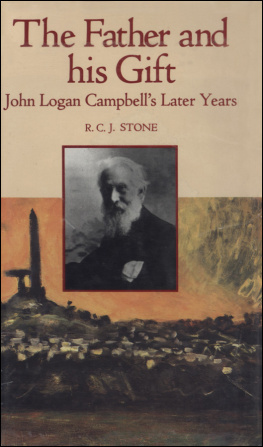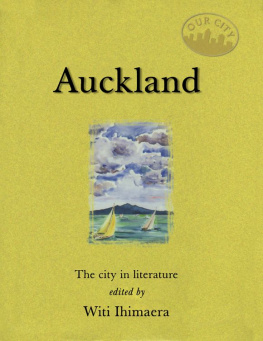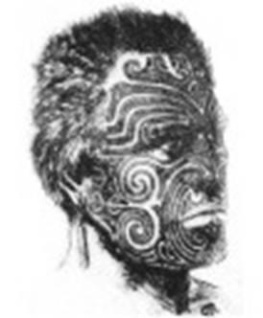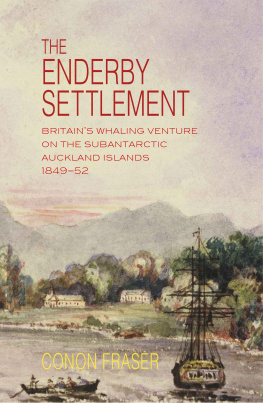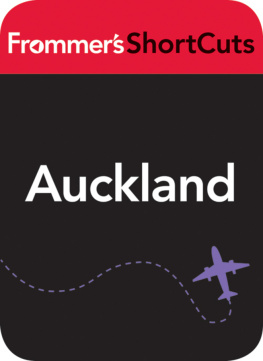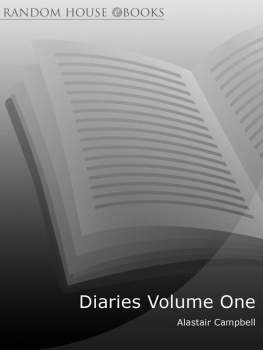YOUNG
LOGAN
CAMPBELL
Sir John Logan Campbell is known as the Father of Auckland; he is almost synonymous with the city. From many parts of it Maungakiekie (which he named One Tree Hill) is a dominant feature; from its summit rears an obelisk which was erected by the terms of his will as a tribute to the Maori people. His statue stands near the foot of the hill, joggers run through Cornwall Park, which he presented to the city, and sometimes pause for refreshment opposite Acacia Cottage, his first residence in Auckland, which was moved to this site many years ago. Pop groups play in the Logan Campbell Centre.
Logan Campbell wrote his own story of pioneering days in Auckland in Poenamo, published in 1881, reprinted many times, and long recognized as a New Zealand classic.
What, then, can be new in a book about him? Many things, particularly the revelation that he was not, at the time, much enamoured of a pioneering life or of the settlement in which he led it. His purpose in coming to New Zealand and remaining here was to make enough money to live the life of a leisured gentleman in Europe. By the end of this book he seemed to have achieved his goal.
Campbell left, probably, a more comprehensive set of papers than any other early settler. From them R.C.J. Stone has told a story which not only reveals the complexities of the man himself, but moves further, to the patrician Scottish background, to his fellow settlers in Auckland, especially his energetic partner William Brown, to the details of the business acumen by which they acquired their premier position among the merchants of early Auckland, and to the turmoil of colonial politics
Dr Stone, who is Associate-Professor of History at the University of Auckland, is working on a second volume which will show how Campbells dream of Europe was shattered, leading to his return to Auckland, where he lived to the age of ninety-four.
The print on the jacket by P. J. Hogan is reproduced by kind permission of Government House; and the two photographs by courtesy of the Auckland Institute and Museum.
YOUNG LOGAN CAMPBELL
R. C. J. STONE

The publishers gratefully acknowledge assistance towards publication from the Sir John Logan Campbell Residuary Estate Trust Board
R. C. J. Stone 1982
First published 1982
This ebook edition 2013
eISBN 978 1 89640 707 0
Typographical design by Neysa Moss
For Mary
ACKNOWLEDGEMENTS
W HEN IN 1964 I began research into the nineteenth-century business community of Auckland, I naturally turned to the John Logan Campbell Papers lodged in the Library of the Auckland Institute and Museum. Campbell was the most prominent of Aucklands businessmen, and the Campbell Papers are the most detailed set of private business papers for the colonial period anywhere in New Zealand. For ten years I studied Campbell as part of a group, the Auckland business elite who were the subject of my book, Makers of Fortune (1973). It is only since 1974 that I have studied Campbell as the subject of a biography in his own right. The sheer bulk of the Campbell Papers and the complexity of this mans affairs during a very long life have meant therefore that after eighteen years I have still written of only his first forty years.
This drawn-out gestation has meant that I have many debts to acknowledge. Foremost of these is to the Sir John Logan Campbell Residuary Estate Board. Use of the Campbell Papers at Auckland Museum Library is only by permission of this trust board. It has always given me full access to the material while in no way limiting my freedom in the use of it. My constant factor in dealing with the Campbell Trust has been Mr K. H. Parker who, because of his own deep interest in Campbells life, has encouraged me whenever he could. As acknowledged elsewhere by the publishers the Campbell Trust has made a grant towards the publication of this book, for which I thank them on my own behalf as well.
I have had financial assistance over the years from the University Grants Committee which has enabled me to travel within New Zealand, especially to Wellington, in the quest for material, and also to photocopy documents where necessary. Provision of leave by my own university for periods in 1974 and 1982, and grants-in-aid on these occasions, have enabled me to continue my researches upon Campbell in Scotland and in Europe. This assistance I am happy to acknowledge.
Thanks are due to the many librarians who have assisted me. This is particularly so in the case of those at the Auckland Museum Library: the two chief librarians there, Miss E. A. Evans and Mr Ian Thwaites, are each enthusiasts for my chosen subject. Miss Evans greatly simplified my work by her indexing of nineteenth-century Auckland newspapers and arranging for some of the illegible Campbell material to be typed. I must also pay tribute to Miss Christina Troups detailed inventory of the Campbell Papersher meticulous cataloguing of the diverse material of the collection still arouses my admiration. Mr Gordon Maitland has helped much with early photographic material, a research area in which he moves with growing authority.
Generous help, as ever, came from the staff of the reference and manuscript sections of the Alexander Turnbull Library in Wellington. The Auckland City Art Gallery and especially Andrew Boyle have been helpful. I owe much to the Auckland Central Library Reference Department. Though under constant pressure they would always turn aside to assist me. Miss Patricia French with her unexcelled knowledge of the detail of nineteenth-century Auckland has helped me much.
In my personal acknowledgements I would list three former students at the University of Auckland: Dr M. N. Pearson, Mr G. C. Dunstall, and Dr S. J. Wallace, who through their written work, or later inquiry on my behalf, helped to simplify my task. Stephen Brandenburg, an architectural student, reconstructed the appearance of Logan Bank from old photographs. Colleagues at the Unviersity who advised me on points about which I was ignorant were: the late Professor M. K. Joseph, Professor Bruce Biggs, Professor E. J. Searle, and Professor W. K. Lacey. Mr E. G. Turbott and the late Mrs Sylvia Reed, both of the Auckland Museum, helped on ornithological points. Mr D. R. Simmons, ethnologist and assistant-director of the Museum, has been extraordinarily patient and helpful. Mr John Stacpoole provided specialist advice on early Auckland buildings.
Over the past eight years the present baronet of Aberuchill and Kilbryde, Sir Colin Campbell, has helped much. In 1974 he provided hospitality at Kilbryde Castle and gave me full use of the family records there. He has subsequently provided me with guidance on important points.
I wish to thank the office staff of the History Department at Auckland for their excellent typing. Mrs Freda Christie typed my final drafts. Mrs Beverley Simmons helped the project in many ways.
Two women more than any other person helped to make this book. My friend Augusta Ford perused my earlier drafts and drew my attention to lapses in grammar and clarity. If there is any pretension in what I have written it is none of her doing. My wife Mary has helped: acting on occasion as research-assistant, typist, and proof reader. But I thank her most of all for cheerfully shouldering the sacrifices which those who live with writers and their manuscripts must make.
CONTENTS
ILLUSTRATIONS
Kilbryde Castle, Perthshire. Campbell papers, Auckland Institute and Museum.
Sir James Campbell, 3rd baronet of Aberuchill and Kilbryde.
Next page

